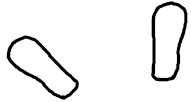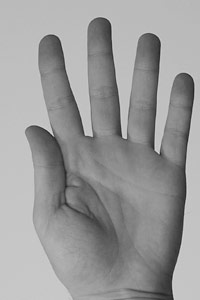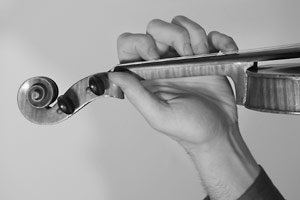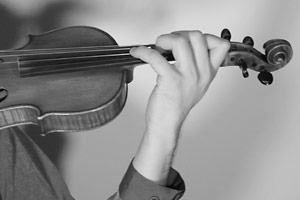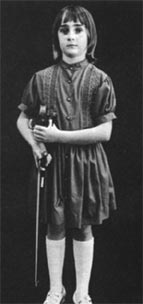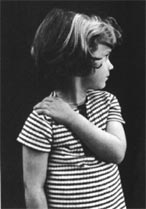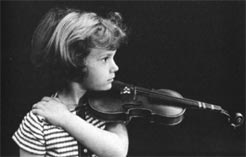|
feets of great strength Rest Position: Feet in rest position should be together but they need not touch.
Play Position: Feet in play position should be comfortably separated with body weight evenly distributed between both feet. Check balance by having someone touch various points on the head lightly and resist gently.
|
|
this hurts, should it hurt? Our goal in teaching music is to make it as free and natural as possible while providing the technique to play the instrument to its fullest potential. Fatigue should never be ignored! Analyze why and where the tension lies and try to relax that area, tension often originates in the larger muscles, higher in the arm, shoulders and back, and is transmitted to the rest of the arm. The upright position for playing adds weight to the front so we must think in terms of counterbalances. When straining to hold the violin or bow, stop, shake out the tension and try again. If still fatigued, stop completely and do something else, musical or otherwise. Remember, practice time needs to be lengthened over time as concentration and stamina increases. Start out with 5 or 10 minute sessions and gradually (over months) increase this time period. Two 5-10 minute sessions a day are great for beginners. Use imagination! Like a teeter-totter, imagine that violin on one side is being balanced on the other side by some imaginary weight sitting on your opposite shoulder. Use this principle of balances to help remove the feeling of a “heavy violin.” |
|
basic finger positions Press thumb into hand, just above where there's the most
pressure is where the violin sits (on top of the first joint of
the thumb and the knuckle of the first finger.) 1st, 2nd, 3rd & 4th fingers, wrist mostly straight (don't
bend it inward!) Place fingers carefully on tapes and be "half
on the pads, half on the tips" of the fingers in general More.... |
|
rest position Violin or viola gently held under right arm with left hand providing support. The bow need not be pointed straight down, but should be held generally pointing down. Bow in rest position should not be held in the finger positions for playing. Don’t forget feet in rest position too!
|
|
play position In preparing to hold the instrument, place the left hand on the right shoulder and turn head to the left. Watch for tension in the left shoulder (raised unnaturally), if tense, make sure that the left hand is placed lightly on the right shoulder and bring the left shoulder down.
Practice turning the head from center to left repeatedly, like exercise. This will help loosen up the neck muscles and make this position easier to maintain.
Next, add the instrument with hand on right shoulder. To begin with, parents or helper should hold the instrument so that it doesn’t fall, or cause apprehension of it falling. Chin should start in an upward position, the instrument inserted touching neck, and then the chin lowered so that it has just enough weight to hold the instrument up. No more weight than that! Watch out for clamping of the instrument. Think of the instrument as floating. Always try to perceive the violin/viola as light. |

